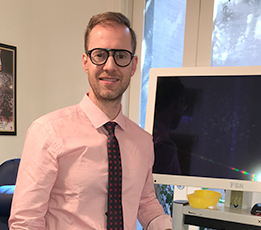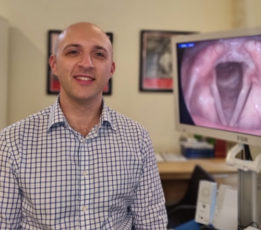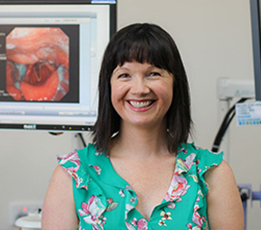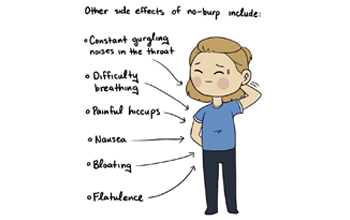Swallowing and Cervical Osteophytes
Definition:
An osteophyte is a bony growth that the body sometimes produces in response to a weakened spine and increased friction. They can form at any level on the cervical spine but are most common at C5-6 and C6-7, likely due to greater load-bearing and mobility of the neck. It is a degenerative change that occurs more commonly in older adults, estimated in 20-30% of the elderly population. Osteophytes are not painful in themselves, and are mostly asymptomatic, however cause symptoms if they are compressing on soft tissue, nerves or blood vessels.
Swallowing is a complicated sequence of both voluntary and reflex movements, which needs your brain to coordinate many muscles and nerves.
Dysphagia is the medical term for a sensation of difficulty or abnormality of swallowing. It can happen rapidly, or slowly and has many causes.
Swallowing problems related to osteophytes are quite rare. The oesophagus rests in front of the cervical vertebrae from C4-7. A large osteophyte may impinge on the oesophagus causing compression, or compress at the level of the cricoid or upper oesophageal sphincter, or cause an inflammatory response causing discomfort.
Causes:
Dysphagia related to cervical osteophytes are rare but related to the impingement of the osteophyte on the upper oesophagus, causing narrowing, and inflammation of surrounding tissue. As this is where the opening to the voice box (larynx) resides it can also alter airway protection by hindering epiglottic movement.
Diagnosis:
The diagnosis of cervical osteophytes can be accomplished with a CT scan, which can clearly define the bony anatomy. Magnetic Resonance Imaging (MRI) may also be considered in patients with additional symptoms such as dyspnea and voice problems (dysphonia), to identify any soft tissue damage, perforations, or superinfection.
The diagnosis of dysphagia involves a thorough case history, clinical examination of the muscles and nerves required for swallowing, digital nasendoscopy of the upper airway and pharynx, and an instrumental swallowing evaluation such as Flexible Endoscopic Evaluation of Swallowing and/or a Videofluoroscopy Swallowing Study (x-ray).
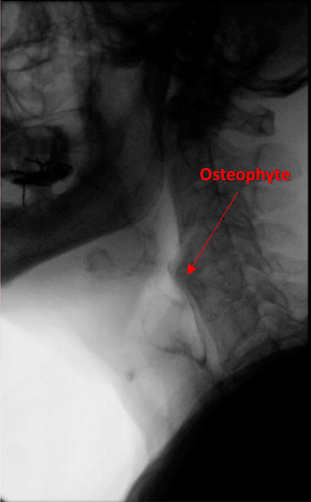
Fig. 1 – Cervical Osteophyte on videofluoroscopy
Additional tests may be required such as a standard barium swallow, and manometry to exclude any muscular cause for your symptoms. A validated questionnaire, called a patient-related outcome measure, is often completed initially, and repeated later on to measure your progress. E.g. Eat-10 or SWAL-QOL.
Symptoms you might experience due to Osteophytes include:
- Globus and/ or discomfort when swallowing
- Food or liquids getting stuck in your throat.
- Coughing or choking while swallowing.
- A wet ‘gurgly’ sounding voice.
In very rare instances, food and drink may get into your airway and lungs. This is called aspiration. If this happens it can lead to infections and pneumonia, which can be very serious. It is important that any changes to your swallowing are identified early, to avoid this happening.
Management:
Once you have had a complete swallowing evaluation, the swallowing specialists can recommend ways to improve your ability to eat and drink depending on the specific problems found:
- Conservative Treatment:
- Anti-inflammatory medication to reduce the swelling and discomfort in the throat.
- Dietary and Swallowing Modifications
- Softening your food to make it easier to swallow.
- Safe swallowing strategies such as eating slowly or taking smaller mouthfuls
- If severe cases, thickening drinks with special powders to make them easier to swallow.
- Surgical Interventions:
- If conservative management has failed, surgical intervention may be considered.
- Surgery for cervical osteophytes has good long-term outcomes. It is an area that is difficult to access without moving other critical structures for swallowing aside, so the risks and benefits from surgery needed to be carefully considered with your surgeon.
Initial recommendations:
- Take your time when eating and drinking
- Take smaller mouthfuls and chew well
- Alternate liquids with solids to clear residue
- Ask your GP or physician today whether you need a swallowing evaluation.
- See your GP urgently if you are coughing and choking after swallowing, have a fever, or a productive cough.



